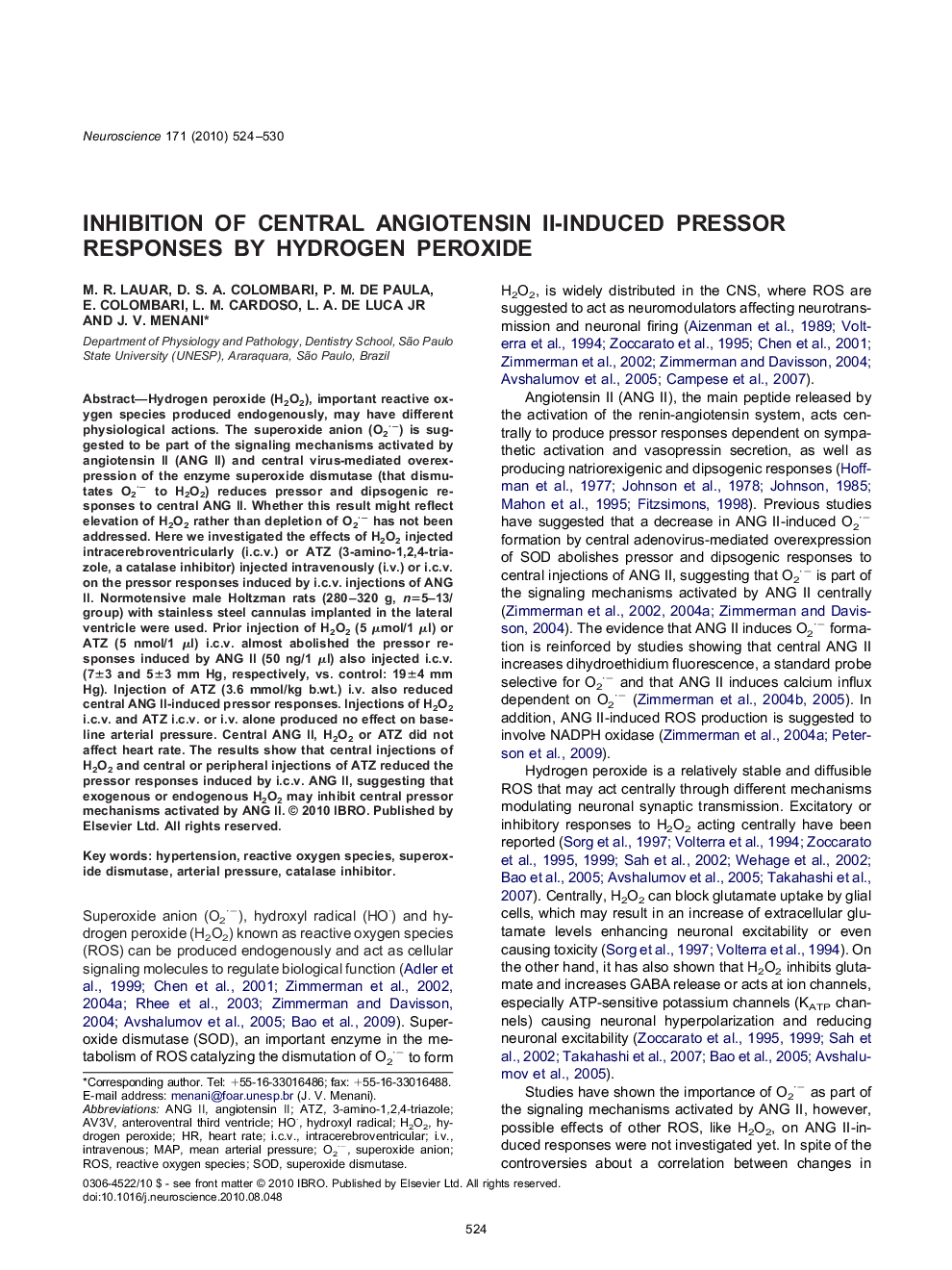| Article ID | Journal | Published Year | Pages | File Type |
|---|---|---|---|---|
| 6276757 | Neuroscience | 2010 | 7 Pages |
Abstract
Hydrogen peroxide (H2O2), important reactive oxygen species produced endogenously, may have different physiological actions. The superoxide anion (O2·â) is suggested to be part of the signaling mechanisms activated by angiotensin II (ANG II) and central virus-mediated overexpression of the enzyme superoxide dismutase (that dismutates O2·â to H2O2) reduces pressor and dipsogenic responses to central ANG II. Whether this result might reflect elevation of H2O2 rather than depletion of O2·â has not been addressed. Here we investigated the effects of H2O2 injected intracerebroventricularly (i.c.v.) or ATZ (3-amino-1,2,4-triazole, a catalase inhibitor) injected intravenously (i.v.) or i.c.v. on the pressor responses induced by i.c.v. injections of ANG II. Normotensive male Holtzman rats (280-320 g, n=5-13/group) with stainless steel cannulas implanted in the lateral ventricle were used. Prior injection of H2O2 (5 μmol/1 μl) or ATZ (5 nmol/1 μl) i.c.v. almost abolished the pressor responses induced by ANG II (50 ng/1 μl) also injected i.c.v. (7±3 and 5±3 mm Hg, respectively, vs. control: 19±4 mm Hg). Injection of ATZ (3.6 mmol/kg b.wt.) i.v. also reduced central ANG II-induced pressor responses. Injections of H2O2 i.c.v. and ATZ i.c.v. or i.v. alone produced no effect on baseline arterial pressure. Central ANG II, H2O2 or ATZ did not affect heart rate. The results show that central injections of H2O2 and central or peripheral injections of ATZ reduced the pressor responses induced by i.c.v. ANG II, suggesting that exogenous or endogenous H2O2 may inhibit central pressor mechanisms activated by ANG II.
Keywords
Related Topics
Life Sciences
Neuroscience
Neuroscience (General)
Authors
M.R. Lauar, D.S.A. Colombari, P.M. De Paula, E. Colombari, L.M. Cardoso, L.A. Jr, J.V. Menani,
